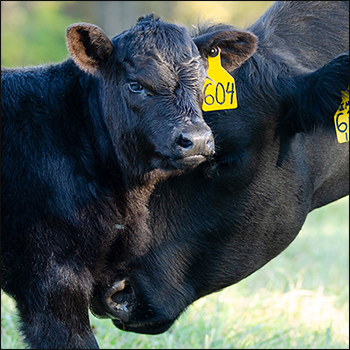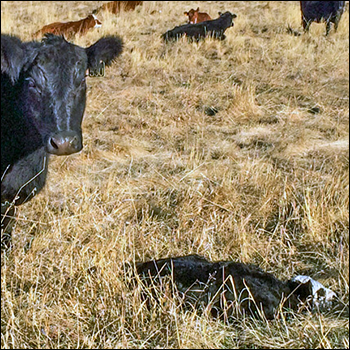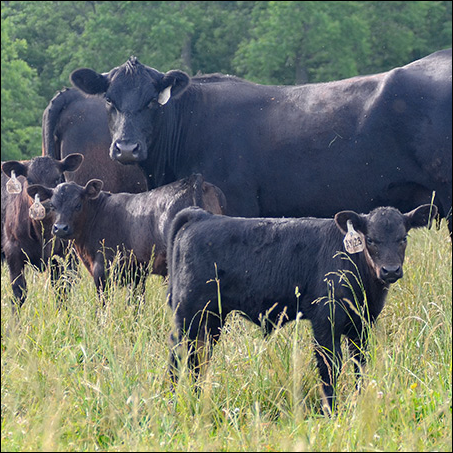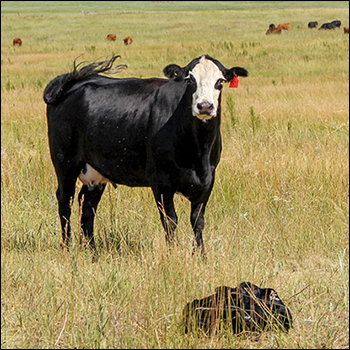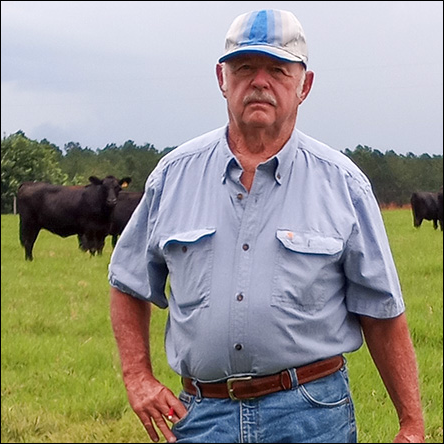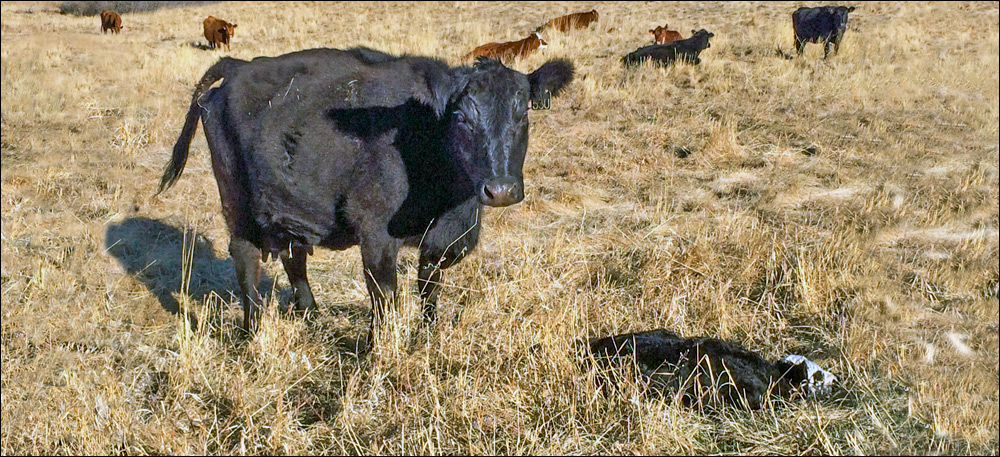
Fall Calving: Challenges of Hot Weather
Hydration is a key concern for both cow and calf.
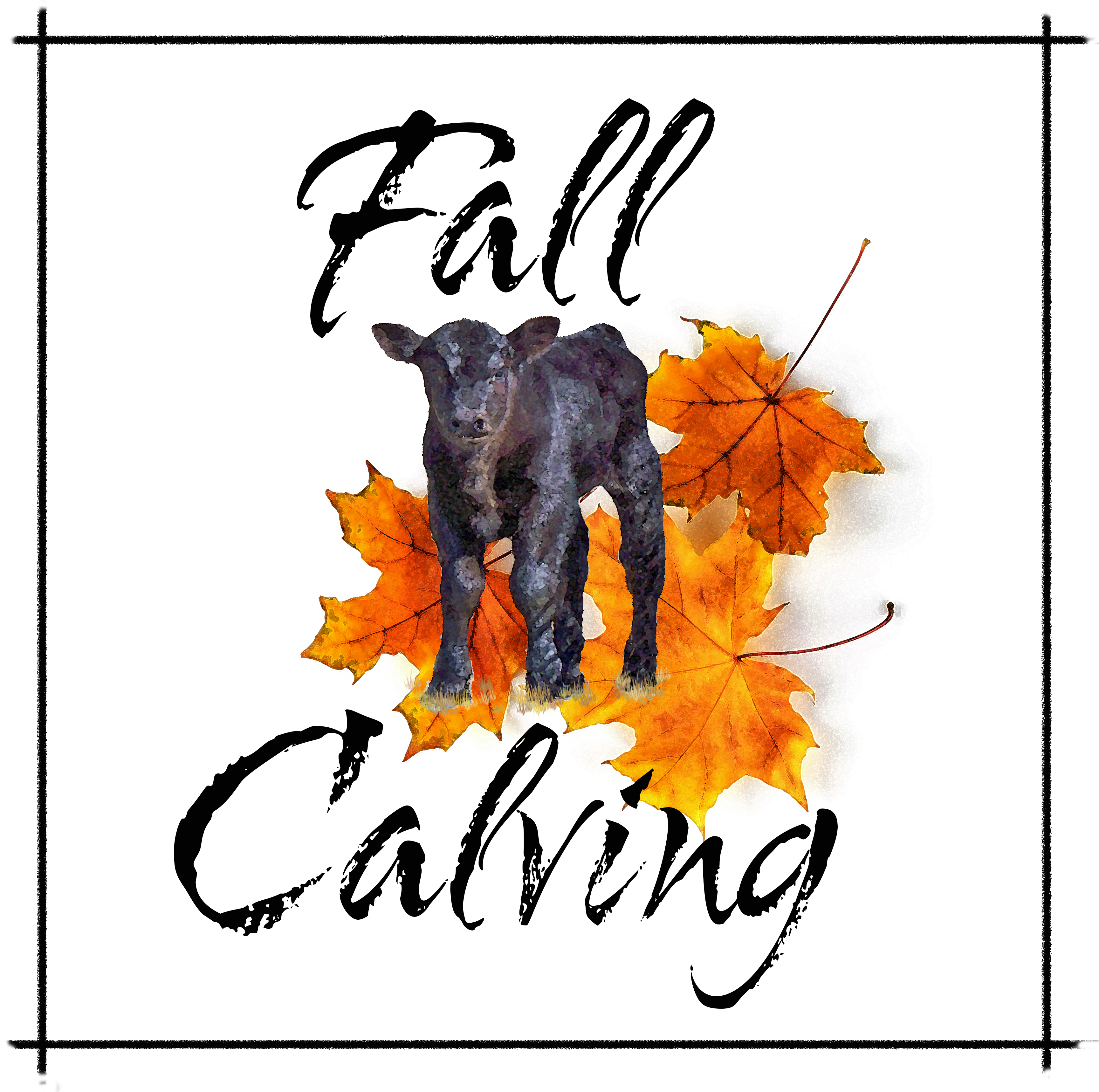
Newborns and young calves are more susceptible to weather stress than older animals. In hot weather, they need shade and plenty of water. Fall calving is often easier than winter/early spring calving, but if weather is hot, it can create unhealthy conditions for young calves.
Arlyn “Jud” Heinrichs, professor emeritus at Pennsylvania State University, says the thermoneutral zone for a young calf is between 50° Fahrenheit (F) and 77°. When temperatures drop below 50°, nutrient needs increase to supply energy for body maintenance and body heat. If temperatures are much higher than 77°, calves need more nutrients to fuel the body’s efforts for cooling.
Heat stress is actually harder on young calves than cold stress.
“People tend to forget that. With heat stress, calves lose their appetite and eat less. They also dehydrate readily,” says Heinrichs. “They need more water in hot weather — and not just milk. They are burning calories because the body has to work at staying cool, and if they are eating less, they grow slower.”
The calf’s body must maintain a constant temperature regardless of outside temperature. With any extremes in weather, calves need more care and management to ensure good health and optimum growth.
Within the thermoneutral zone, the body can maintain a constant temperature without expending extra energy. The thermoneutral zone is affected by ambient temperature, which depends on air movement, moisture, hair coat, sunlight, bedding and rumination, says Heinrichs. If the calf is old enough to have a functional rumen, the heat of fermentation digestion adds to the body heat that must be dissipated during hot weather.
Effects of heat stress on the dam before calving can also negatively affect calves. In a University of Florida study, calves born to heat-stressed dams weighed 13 pounds (lb.) less at birth and 28 lb. less at weaning than calves born to cooler dams. Calves born to heat-stressed dams had reduced passive transfer of immunity and compromised cell-mediated immunity compared to calves born to cooler cows, according to the study.
The link between successful passive transfer and improved calf performance is well-known, the study asserted. The effect of a calf with an impaired immune system in hot weather should not be ignored.
Also, a cow in labor during hot weather becomes overheated and exhausted sooner than a cow calving in cooler weather. This may have a negative effect on how long it takes her to calve and how stressed she and the calf will be.
A newborn calf has an immature “thermostat” and has trouble regulating body temperature during weather extremes — chilling more readily in cold weather or becoming hotter during hot weather than an older calf. The young calf doesn’t have the body mass and reserves of an older, larger animal, and it is more susceptible to dehydration. The effects of heat stress may be greater than cold stress in limiting average daily gain in young calves.
Importance of water
If a calf doesn’t have access to clean, cool water, it won’t drink enough to prevent dehydration. The problem is compounded if the calf is sick because it loses fluid through diarrhea.
As calves attempt to maintain proper body temperature in hot weather, fluid is lost through increased respiration and sweating. Calves need more fluid in the form of water, not just milk, says Pete Erickson, University of New Hampshire.
“Research done by Purina in the mid-1980s, by calf researcher Dr. Al Kertz, looked at feeding calves the same diet, with half the calves having access to free-choice water and the other half didn’t. He saw an increase in average daily gain in calves that had free-choice water, increase in feed intake, etc.”
Water goes to the rumen, while milk goes to the abomasum (the true stomach — where it is digested better than in the rumen) because of the esophageal groove.
“Bacteria in the rumen must have a watery environment. You can’t shortchange a ruminant animal on water, or digestion is not very efficient,” says Erickson.
Beef calves start eating forage in the first week of life, copying mom as she grazes or eats hay. The rumen develops quickly and these calves are often chewing the cud by 2 weeks of age.
If the calf is eating forage, bacteria ferment the feed and produce volatile fatty acid.
“The rumen develops primarily because of the volatile fatty acid butyrate. You have all of this going on, plus heat produced during fermentation,” says Erickson.
If they don’t have access to streams or ponds and must rely on water tanks, those may be too high for small calves to reach, especially if the water level drops when the cows drink. You need to make sure calves always have access to water and the troughs are never too empty for young calves to reach it.
Shade
In hot weather, make sure calving cows and young calves have shade. Heat stress can take a severe toll on young calves, and the color of the calves can make a difference. A black calf in a pasture with no shade and no breeze and an outdoor temperature of 100° or higher may not be able to handle it. Many baby calves are lost during severe heat waves if they get too hot.
If you don’t have natural shade, you can create shade by making a series of shed roofs. It’s important to have high roofs — at least 10 feet (ft.) off the ground, and 15 ft. or higher is better — to allow plenty of air flow underneath. This enables a breeze to help cool the animals.
Natural air movement under the roof is affected by height, size, slope of the roof, and the ease with which air can move through it. Shade cloth has an advantage over a solid roof because air can pass through the material. A sloping roof creates better ventilation than a flat one.
Editor’s note: Heather Smith Thomas is a cattlewoman and freelance writer, from Salmon idaho. Photo by Stephen Hughes.

